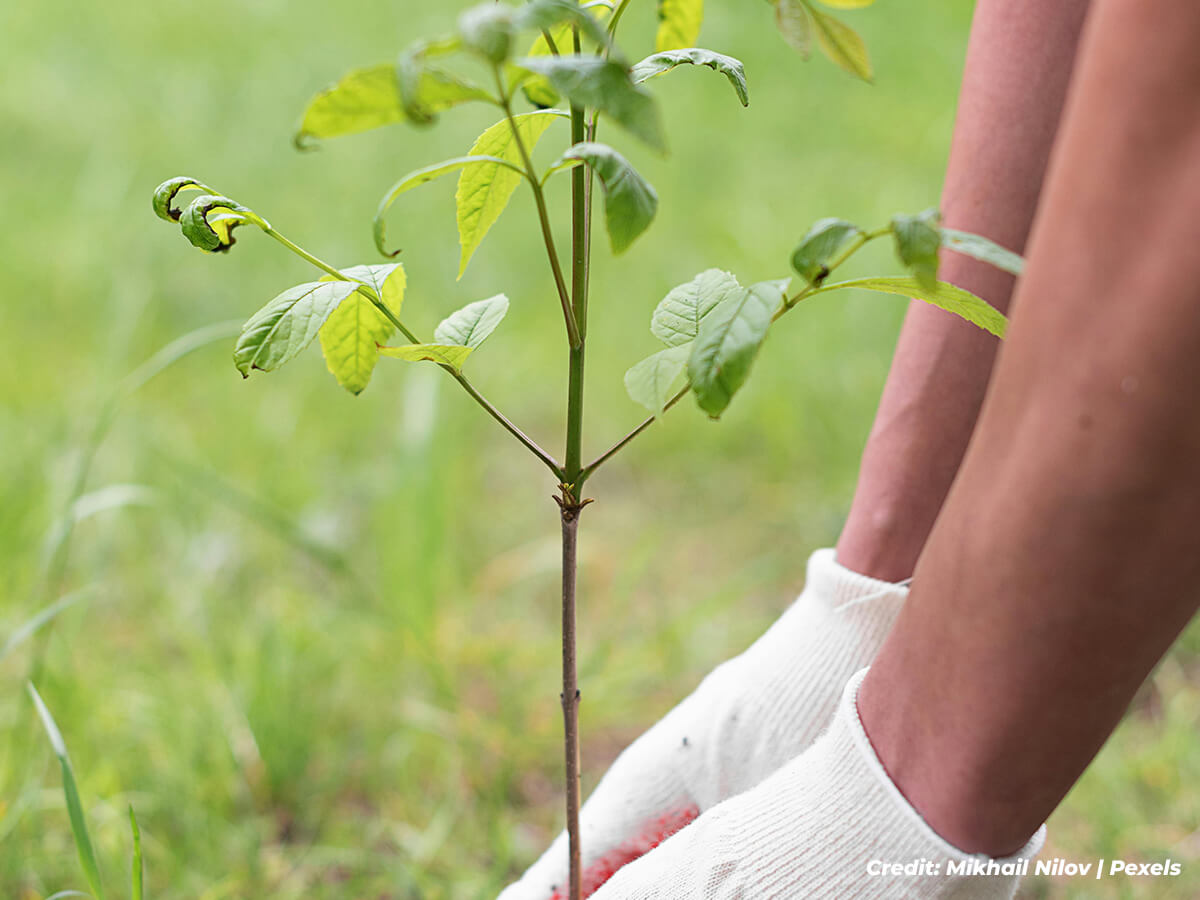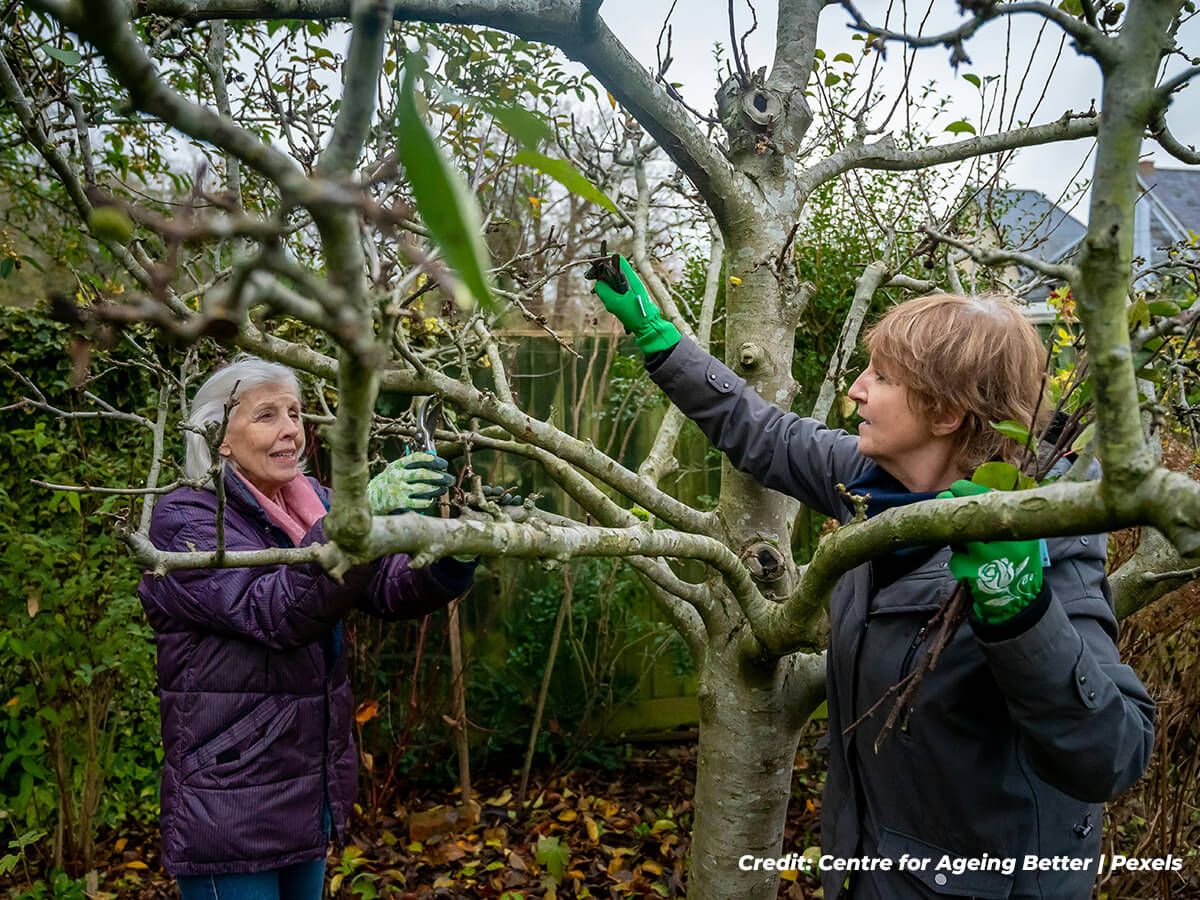Trees are magnificent, vital components of any landscape, offering ample shade, beauty, and ecological benefits for your home. While their vibrant spring blossoms and lush summer canopies often capture our attention, optimal tree health is a year-round commitment, extending far beyond the fleeting beauty of a single season. A truly thriving tree is the result of consistent care, an understanding of its ongoing needs, and proactive measures to ensure its well-being through every cycle of the year.
https://www.pexels.com/photo/elderly-women-working-in-garden-7849455/
1. Winter’s Dormant Care
Winter comes with shorter days and low temperatures, and it’s at this time that trees enter a period of dormancy. At first glance, they appear lifeless but actually conserving energy for the coming spring. This is an opportune time for certain maintenance tasks.
Pruning: Winter offers an excellent time to prune a tree and encourage new growth in spring. Dormant pruning, typically done in late winter before new growth emerges, allows for clear visibility of the tree’s structure. Remove dead, diseased, or crossing branches to improve air circulation and light penetration, and to prevent potential hazards. Always use sharp, clean tools and make cuts just outside the branch collar to facilitate proper healing. For larger limbs, consider consulting a certified arborist to ensure safety and proper technique.
Protection from Pests and Wildlife: While many insect pests are dormant, some overwinter in tree bark or leaf litter. A thorough inspection can identify potential issues. Protect young trees from gnawing rodents or deer by installing tree guards or fencing. Snow accumulation around the base of trees can act as an insulator, but heavy, wet snow on branches should be carefully removed to prevent breakage.
Winter Watering (if applicable): In periods of prolonged dry spells during winter, especially for newly planted trees or those in exposed locations, a deep watering can be beneficial (helping your tree avoid desiccation, among other issues), particularly if the ground isn’t frozen solid.
2. Spring’s Awakening and Growth
With the lengthening days and warming temperatures, spring signals a burst of new growth and is, therefore, an optimal time to keep up with your tree care. This period is crucial for establishing a strong foundation for the year.
Watering: As the ground thaws and new leaves emerge, ensure adequate moisture. Deep, infrequent watering is preferable to shallow, frequent watering, encouraging deeper root development. The goal is to moisten the root zone to a depth of at least 30 to 45 centimetres.
Mulching: Apply a 5 to 10 centimetre layer of organic mulch, such as wood chips or shredded bark, around the base of the tree, keeping it a few centimetres away from the trunk. Mulch helps retain soil moisture, regulate soil temperature, suppress weeds, and slowly release nutrients as it decomposes.
Fertilization (if needed): A soil test can determine if your tree requires additional nutrients. If so, a slow-release granular fertilizer applied in spring can provide a steady supply of nourishment throughout the growing season. Avoid over-fertilizing, which can harm the tree.

3. Summer’s Sustenance and Vigilance
Summer is a period of active growth and photosynthesis, but also one where trees can face significant stress from heat and drought.
Consistent Watering: Continue with deep, infrequent watering, especially during dry periods. Young trees and those in sandy soils may require more frequent attention. Observe the leaves for signs of stress, such as wilting or discolouration.
Pest and Disease Monitoring: Regularly inspect your trees for any signs of insect infestation or disease. Look for unusual spots on leaves, chewed foliage, or bark abnormalities. Early detection and intervention are key to managing these issues effectively. Many common pests can be managed with non-chemical methods if caught early.
Pruning (limited): Limit summer pruning to removing dead, diseased, or hazardous branches. Avoid extensive pruning of healthy wood, as this can stress the tree during active growth and expose it to sunburn.
4. Autumn’s Preparation for Dormancy
As the vibrant colours of autumn emerge, trees are preparing for their winter rest, drawing energy back into their trunks and roots.
Deep Watering: Continue to water deeply until the ground begins to freeze. This ensures the tree goes into winter dormancy well-hydrated, which is particularly important for evergreens.
Leaf Litter Management: While raking leaves is common, consider leaving some under trees as mulch. If you do opt to rake the lawn, compost them or use them to enrich garden beds. Mulch is also a boon for your trees, so making use of those discarded leaves in this way lets you take advantage of the season to make tree care easier for you. Removing all leaf litter can eliminate potential habitats for insects and other pests.
Final Inspections: Before winter sets in, conduct a final inspection for any potential issues that need addressing, such as weak limbs that could be prone to breakage in winter storms.
By adopting a year-round approach to tree care, you move beyond simply admiring the bloom and actively participate in fostering the long-term health and vitality of these invaluable natural assets. A well-cared-for tree is not just a beautiful addition to your property; it’s a resilient, enduring component of a healthy ecosystem, and therefore, something worth putting in the time to care for.
When you need hand with your trees, Dave Lund Tree Service is here to help. We have a wealth of experience working with a wide range of trees, and we’re happy to help out when you need to give your trees some care. Give us a call now at (905) 775-1020 when you need a professional touch for your tree care.

